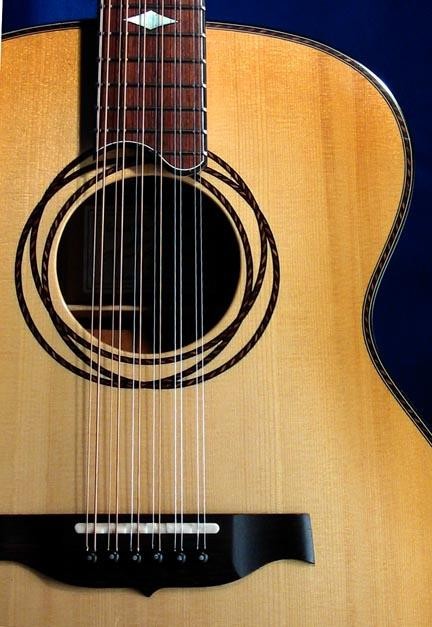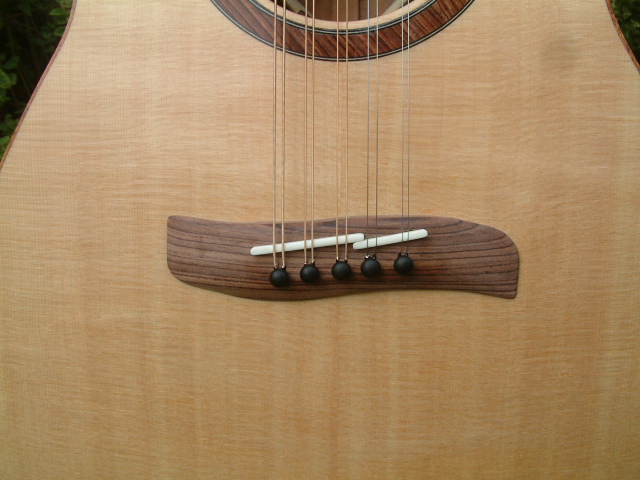[QUOTE=KiwiCraig] Thanks again Andy.
I have a question which is kind of related .
With a pinned 12 string bridge . The string pair spacing are dictated by the width of the actual bridge pin diamater . I have found them to be too far apart on some arrangements , even when the string is nudging the front pin on it's way to the saddle.
On my bridge design ,I have the thinner course of strings use the rear set of pins. My reasoning being ,that the thinner course ( being a smaller diameter ) would end up closer to it's mating string at the saddle . After studying other makers choices , I've found some do it this way , and others don't.
The only other ways I can think of having closer pairs is making a pinless bridge . I just don't feel comfortable having a pinless with all that extra string pull. I did think of using a bridge with six shared pin holes , but concern myself with the little nub left between the pair . How long will that last ?
I also thought of having a hybrid type bridge . i.e. Six strings using pins ,and the thinner ones being pinless . This doesn't solve the spacing issue though , as the thinner set still has to pass by the pinned set , so the bridge pin diameter still dictate the pair spacing.
Anyone out there have a brilliant answer ? I'd sure like to hear it.
Sorry Andy , didn't mean to highjack your thread but it is kind of related[/QUOTE]
Craig,
Howard Klepper gave me the answer when I was making my guitar-cittern that had 5 pairs of strings. Drill 6 holes and put two strings per hole - slotted bridge. You use the ebony oversize 5 degree bridge pins that Stew Mac sells. This is the picture Howard sent me (hope he doesn't mind me posting it):

And this is what I did on the guitar-cittern:

 ) and see how it goes. If I were to make myself one I would do the double string per hole.
) and see how it goes. If I were to make myself one I would do the double string per hole.
 )and lock them with the pin this way while the strings are tensioned. The string pull is upwards and so won't force them one way or the other. You could end up with them slightly splayed. These things have a mind of their own which generally means they will point in whatever direction is not the one you want them in
)and lock them with the pin this way while the strings are tensioned. The string pull is upwards and so won't force them one way or the other. You could end up with them slightly splayed. These things have a mind of their own which generally means they will point in whatever direction is not the one you want them in